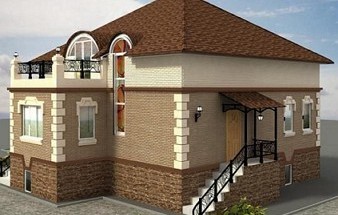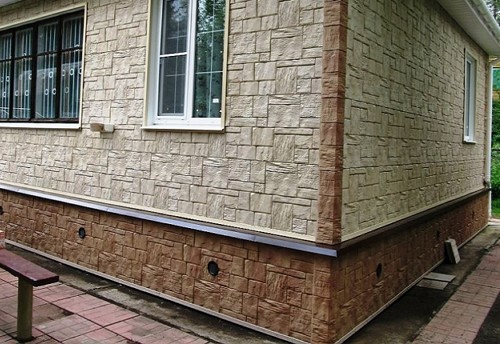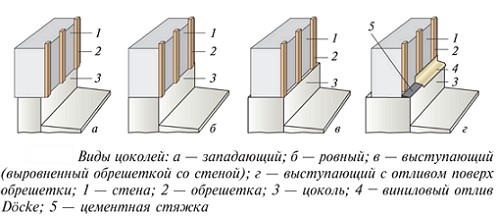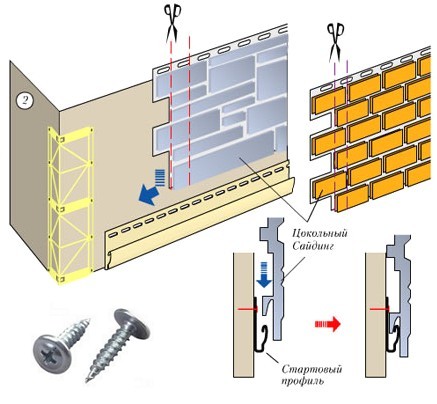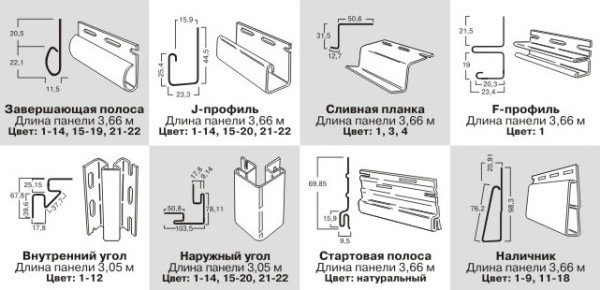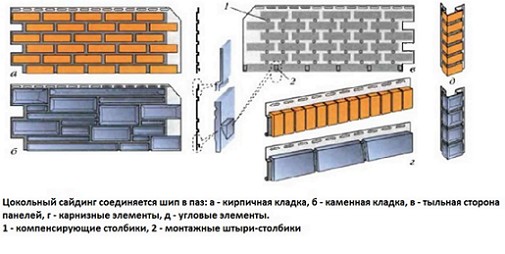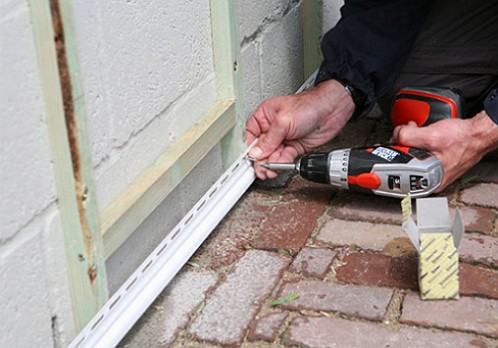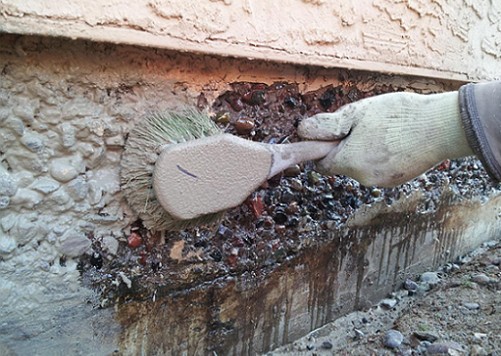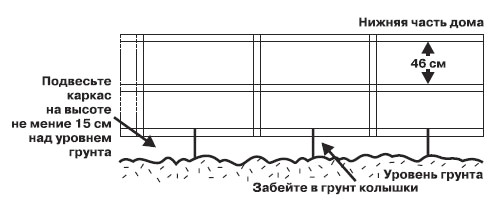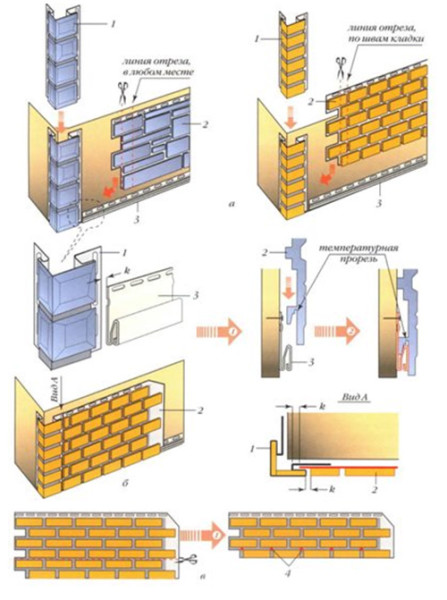The plinth is a kind of transitional design of the house, creating the impression of an aesthetic and completed design. To pick up the original design, for finishing the socle use a variety of materials, such as siding. The attractiveness and practicality of the socle, lined with siding, can not go unnoticed. What are the parameters for choosing the material, and how to finish correctly?
Content
Plinth arrangement
Structurally, the device of the socle does not differ from that of a conventional foundation. The height of the socle depends on the structure and number of storeys of the private house, as well as the relief of the plot.
Traditionally, during the construction and installation of the socle is recommended to withstand a height of 500 mm. House with a low cap looks squat and noticeably loses in the architectural solution.
Regarding the plane of the wall, the socle element can be:
• sinking
• speakers
• flat (wall and base of the same width).
The width of the basement element, depending on the type, can be in the range from 450 to 470 mm, so the finishing socle siding was designed taking into account the height of the socle. Recall that the siding panels for the socle have the dimensions: 420 x 1000 mm, 447 x 1165 mm.
Helpful Tips
The most suitable variant of the plinth for facing is the sinking profile. This is due to the ease of installation of the start profile. However, using the thickness of the battens, you can adjust the type of socle. The exception is the protruding type of socle, for which installation of an ebb is supposed.
Why we choose siding
The design of the basement of the private house is subject to daily intense adverse environmental influences. Therefore, this part of the house needs protective measures. Various technologies and materials are used for protective functions. Sufficiently popular and profitable is the finish of the socle siding.
Finishing material siding is designed to protect facade and basement structures. The main advantage of the material lies in such qualities:
• Long service life (the material does not change the original shape, color and geometry)
• PVC siding panels do not exfoliate, do not peel and are perfectly resistant to mechanical influences
• affordable and economical installation, which is carried out independently
• convenient system of fastening with bolts and locks
• simple daily care.
A convincing list of positive qualities allows us to conclude why we choose siding for finishing the socle.
What is a basement siding for finishing works is shown here.
Mounting set of siding
The classic mounting set of siding consists of the following elements:
• a frame element that includes guide rails from the metal profile. For guides use UD-profile (size 50x30 mm). Fastening of a profile is made with the use of dowels or brackets.
• socle panels, which are PVC plates with a printed invoice. It can be a solid stone siding, a tree, a brick (Solid Mur), or sandstone. Particularly interesting are collections of brands of socle siding producers: VOX and Novik.
Unlike wall panels, the siding panels under the plinth have a large thickness, because the basement area of the house is most exposed to impacts and wear.
Helpful Tips
When choosing a socle siding, it is better to give preference to those species that have the possibility of masking the joints, giving the integrity of the surface. Naturally, the price of the siding depends on the "sophistication" of the texture and pattern. The installation kit must relate to one lot, the number of which is indicated on the marking.
The following additional elements are used for socle siding:
• starting and finishing strips
• corners external and external
• individual fittings
• eaves and ebb for the ledge.
And, at last, for fastening of elements use various expendable materials: self-cutters, термошайбы, скобы and other. A specific set of consumables depends on the size of the panels and the method of installation.
Installation and finishing of the basement of the house with siding by one's own hands consists in the usual fixing of the panels among themselves and the attachment of the panels to the fastening elements.
How to properly mount the socle siding?
The technology of mounting the siding on the plinth consists of the following stages:
• Measurement and preparation
• installation of a billet
• installation of the starting bar
• installation of the outer corner
• installation of ordinary panels
• installation of the last row panel
• Install the next row.
measurements and preparation
We make an accurate measurement of the perimeter of the cap and the height. We assess the condition and strength of the socle base. If necessary, we strengthen the problem areas. We make an approximate calculation of the necessary panels for the cladding. Before the erection of the frame, the battens are cleaned and swept. Protruding pipes, dowels or pipes are recommended to be removed.
erection of a skeleton framework
Installation of the siding for the socle is recommended to be carried out on a metal crate, which will be less susceptible to moisture and provide a ventilated gap. The main horizontal guides of the battens are set at a distance of 420-440 mm. To install the outer corner siding, it is necessary to install vertical guides at a distance of 100 mm from the corner of the building.
The entire design of the battens should provide a flat surface for the installation of panels.
set the starting bar
The starting bar is mounted at the bottom of the cap at a distance of 100 mm from the corner. We check that the line of fastening of the starting bar was strictly horizontal along the entire perimeter.
Fastening of the bar is made with a step of 300 mm with the help of self-tapping screws with a thermowell. After preparing the frame for the brackets mount moldings T-shaped. Then we carry out the warming of the plinth by the crate.
mounting angle of the outer
The outer angle begins to form on the left side. Recall that the lower edge of the angle of the outer and the first row of panels is set at one level of the edge of the starting plate. The first fixing element of the outer corner is installed in the upper part of the hole, the rest of the fixture is in the center of the holes.
assembly of ordinary panels
Recall that the installation of the socle siding is produced from the bottom up and placing the panels from left to right. Each ordinary strip is screwed to the guides using short screws. For the recessed part, the recommended fixing step is 15 cm. Each panel is inserted into the bar and pushed into the groove of the corner.
All available L-shaped locks on the panel snap on the starting bar. Cut only the first and last rows of panels. Pre-gather the panels in a row and schedule a cut line. The cut piece is then used as the starting part for the other row. The panels are fastened through the holes of the second upper row.
set the last panel in the row
The final panel of the row is inserted into the groove of the corner. The entire row of panels is bent and jointed. By pressing the connecting seam, the finished row is pushed in place and the final fastening is made.
Finally, external elements are mounted: docking strips external and corner decorative elements.


